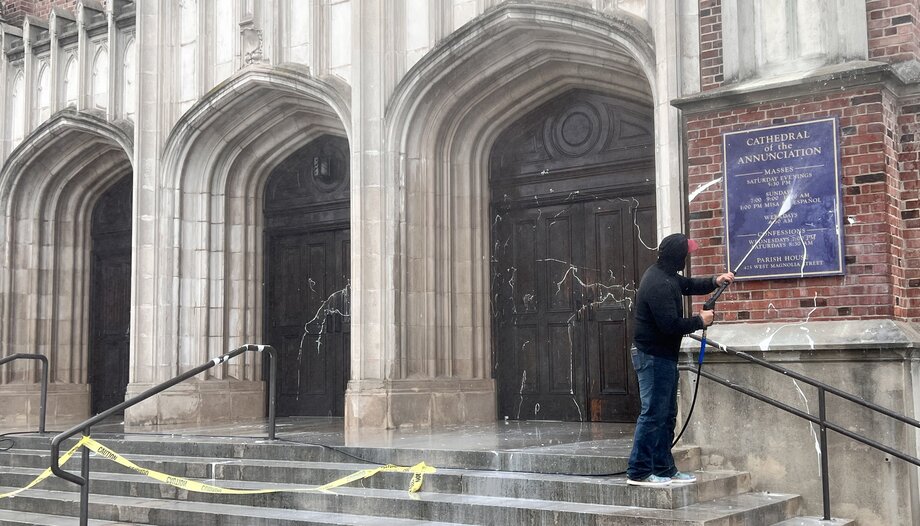Since 2020, there have been at least 308 incidents of vandalism and destruction in parishes or chapels of the Church in the United States. Arson, destroyed images, stained glass windows, stolen liturgical objects, walls and doors painted with anti-Catholic language, are some of the cases of vandalism that have occurred in the last three years.
Sometimes these crimes can escalate into hate attacks resulting in loss of life, as happened in 2017 at St. Augustine's Church in Des Moines, Iowa. At other times, the attacks can be cyber attacks as in 2019 at St. Ambrose Church in Brunswick, Ohio, a computer crime that left millions in losses. Threats to places of worship in the U.S. are increasingly complex and widespread, ranging from acts of vandalism or cyber attacks to attacks with weapons.
Given this reality, Archbishop Timothy Dolan, Archbishop of New York and chairman of the Committee for Religious Freedom of the USCCB, noted in 2022: "The U.S. bishops have noted a disturbing trend of vandalism in Catholic churches. We are not alone. Our friends in other religious groups also suffer these attacks, and in some communities they occur more frequently."
Catholic, Christian, Jewish and Muslim places of worship have become potential targets for vandalism or attacks, especially since the conflict between Israel and Hamas. FBI Director Christopher Wray noted in an appearance before lawmakers on December 6 that hate crimes in the U.S. have been on the rise for some time, but the number of cases has increased by 60 % since October 2023.
Security for religious communities
In light of these developments, the Department of Homeland Security (DHS), through the Agency for Infrastructure Security and Cybersecurity released a set of security guidelines for places of worship on December 6. The 16-page document titled "Physical Security Performance Goals for Religious Communities" contains a series of actions specifically designed to help religious organizations plan for, protect their buildings, and respond to threats.
"The physical security performance goals we are releasing today provide churches, synagogues, mosques, and other religious institutions with accessible and easily implementable strategies to improve their security and reduce risk to their communities," said Alejandro N. Mayorkas, Secretary of the Department of Homeland Security. For her part, Jen Easterly, DHS Agency Director in charge of the DHS Infrastructure and Cybersecurity Agency stated, "The agency has a long history of supporting faith communities to improve physical and cybersecurity practices."
Some of the recommendations presented in the document are: Monitor access points with video surveillance systems, place motion-activated lighting outside, install alarms on windows and doors, control access to reserved areas such as offices, electrical or computer facilities. In the case of schools, it is recommended to have only one controlled entry point.
On the other hand, to prevent cyber attacks, the agency recommends updating software periodically, requiring secure passwords for accessing computer files, protecting data with encryption methods, and verifying that there are no unauthorized connections or devices on computers. The text also suggests forming a security planning team with members of the community and having a leader, ideally with professional experience in the area, to assist in emergency situations.
DHS also recommends that religious group leaders reach out to local law enforcement personnel and agencies to learn how they can help deal with an emergency when it arises.








